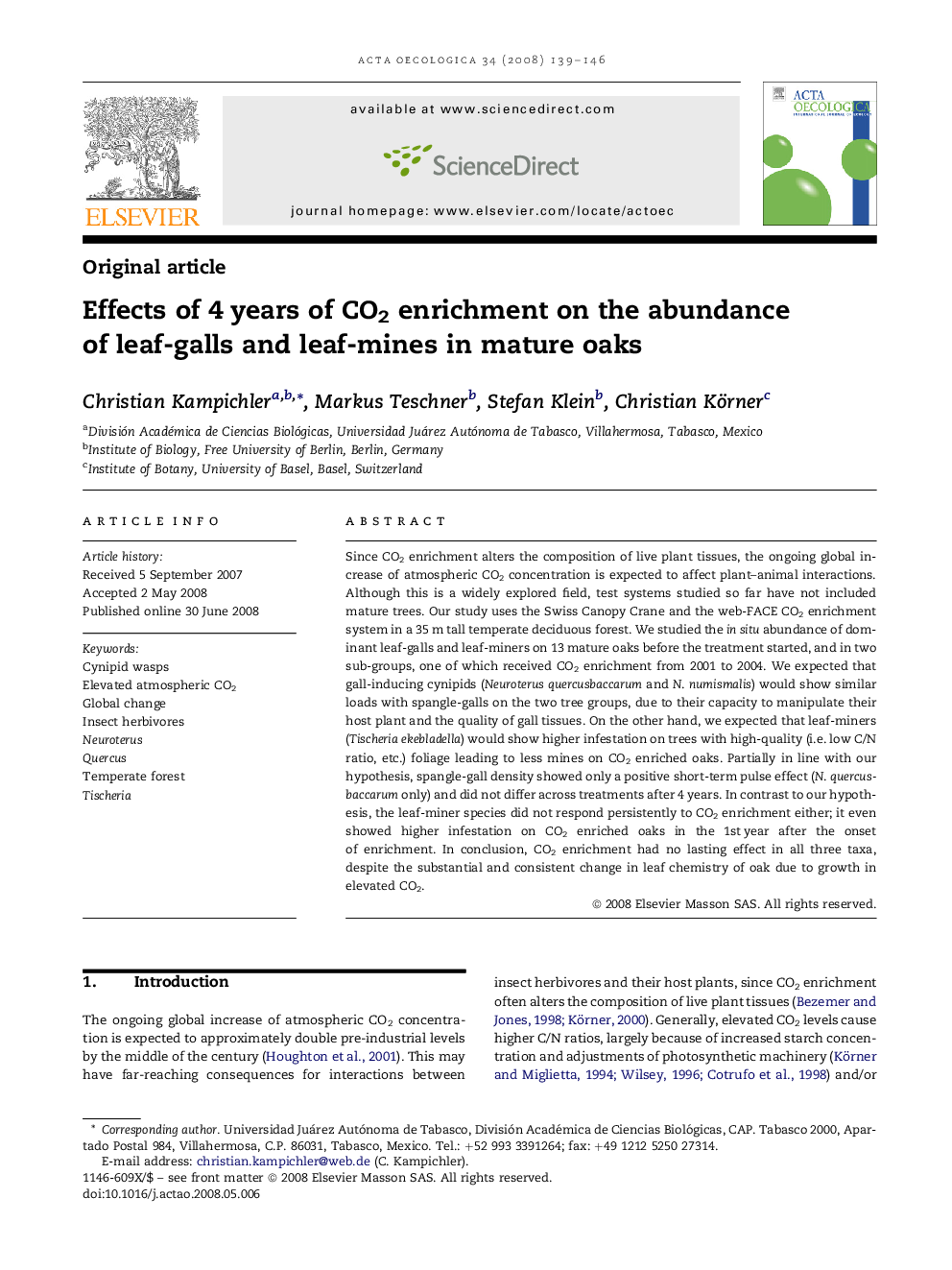| Article ID | Journal | Published Year | Pages | File Type |
|---|---|---|---|---|
| 4381517 | Acta Oecologica | 2008 | 8 Pages |
Since CO2 enrichment alters the composition of live plant tissues, the ongoing global increase of atmospheric CO2 concentration is expected to affect plant–animal interactions. Although this is a widely explored field, test systems studied so far have not included mature trees. Our study uses the Swiss Canopy Crane and the web-FACE CO2 enrichment system in a 35 m tall temperate deciduous forest. We studied the in situ abundance of dominant leaf-galls and leaf-miners on 13 mature oaks before the treatment started, and in two sub-groups, one of which received CO2 enrichment from 2001 to 2004. We expected that gall-inducing cynipids (Neuroterus quercusbaccarum and N. numismalis) would show similar loads with spangle-galls on the two tree groups, due to their capacity to manipulate their host plant and the quality of gall tissues. On the other hand, we expected that leaf-miners (Tischeria ekebladella) would show higher infestation on trees with high-quality (i.e. low C/N ratio, etc.) foliage leading to less mines on CO2 enriched oaks. Partially in line with our hypothesis, spangle-gall density showed only a positive short-term pulse effect (N. quercusbaccarum only) and did not differ across treatments after 4 years. In contrast to our hypothesis, the leaf-miner species did not respond persistently to CO2 enrichment either; it even showed higher infestation on CO2 enriched oaks in the 1st year after the onset of enrichment. In conclusion, CO2 enrichment had no lasting effect in all three taxa, despite the substantial and consistent change in leaf chemistry of oak due to growth in elevated CO2.
